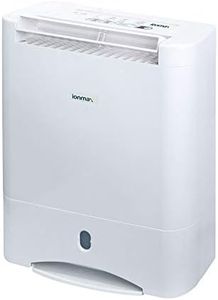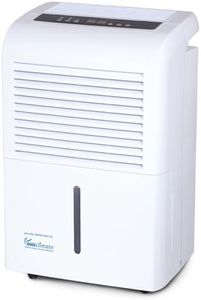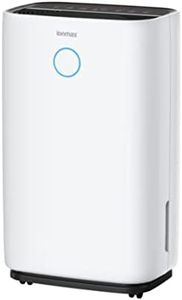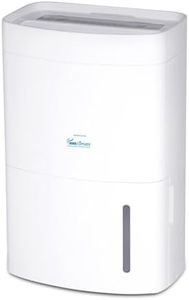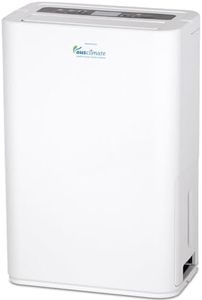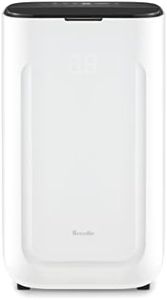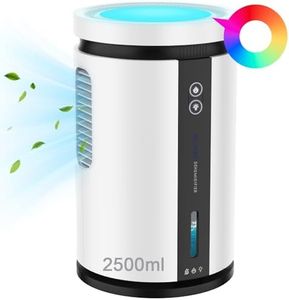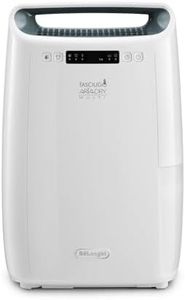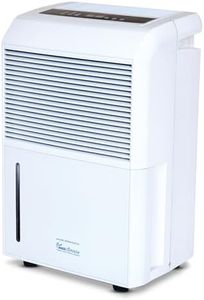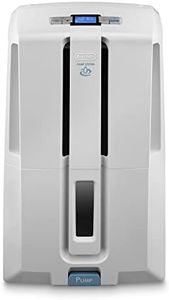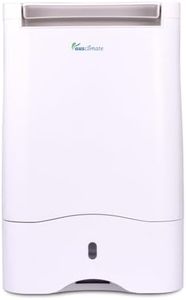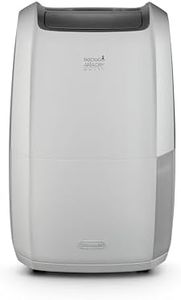We Use CookiesWe use cookies to enhance the security, performance,
functionality and for analytical and promotional activities. By continuing to browse this site you
are agreeing to our privacy policy
10 Best Energy Star Dehumidifiers
From leading brands and best sellers available on the web.Buying Guide for the Best Energy Star Dehumidifiers
Choosing the right dehumidifier can make your home more comfortable and protect your belongings from excess moisture. Energy Star certified dehumidifiers are energy efficient, which means they use less electricity compared to non-certified models. When selecting a dehumidifier, it's important to understand how different features and specs match your space and needs. By looking into the key specifications and how they impact performance, you’ll be able to find a machine that fits both your room and lifestyle.Capacity (Pints per Day)Capacity refers to the amount of moisture a dehumidifier can remove from the air in 24 hours, usually measured in pints. This is important because it determines how effectively the device can lower humidity in your space. Small capacities (usually 20–30 pints/day) are suitable for small rooms or areas with low humidity. Mid-range (30–50 pints/day) work well for medium-sized rooms or areas with moderate dampness. High capacities (50+ pints/day) are best for basements, large rooms, or very humid environments. To pick the right one, consider both your room size and how damp the area gets; larger or wetter spaces need higher capacity.
Energy Efficiency (Energy Star Certification)Energy efficiency shows how much electricity the dehumidifier uses to remove moisture. Energy Star certified models are designed to use less power, which saves you money and is better for the environment. This matters if you plan to run your dehumidifier frequently or for long periods. All Energy Star dehumidifiers meet certain requirements for efficiency, but some may be even more efficient than others. If you want to lower your energy bills and reduce environmental impact, always look for the Energy Star logo.
Water Tank Size and Drainage OptionsThe water tank collects the moisture pulled from the air. A larger tank means you won't have to empty it as often, which adds convenience. Tanks can range from around 1 pint to several gallons. Some models offer continuous drainage options with a hose, so you never have to empty the tank by hand. If you don’t mind emptying a tank daily, a smaller one might suffice, but for less maintenance or for use in high-humidity areas, consider a larger tank or automatic drainage.
Room Size CoverageThis spec tells you what size of space the dehumidifier is designed to handle. It’s usually measured in square feet, and helps ensure the dehumidifier is effective in your intended room. For example, a unit rated for 500 square feet works well in small apartments or bedrooms. For bigger spaces like basements or large living rooms, you’ll want a higher coverage rating. Always match the specification with your actual room size to ensure proper performance.
Humidistat and ControlsA humidistat allows you to set your desired humidity level, and the dehumidifier will automatically turn on or off to maintain that setting. This feature is important for energy savings and comfort, since it prevents the room from becoming too dry or staying too damp. Models range from basic manual dials to digital displays with precise humidity settings. If you want to set and forget, look for an automatic humidistat; for those who prefer hands-on control, simpler models might be enough.
Noise LevelDehumidifiers make noise when they run, which can be distracting if placed near living or sleeping areas. Noise levels are usually measured in decibels (dB). Lower dB numbers mean quieter operation. If the dehumidifier will operate in a quiet space like a bedroom or office, choose a model that lists low noise or quiet modes. For areas where noise is less of a concern, like basements, a louder unit might not matter.
Filter Type and MaintenanceMost dehumidifiers have a filter to catch dust and particles from the air. Some also reduce allergens or have washable filters. Easy-to-remove, washable filters make maintenance simple and keep the air cleaner. If you’re sensitive to allergens, or want less frequent filter replacement, opt for a dehumidifier with a reusable or high-performance filter.
